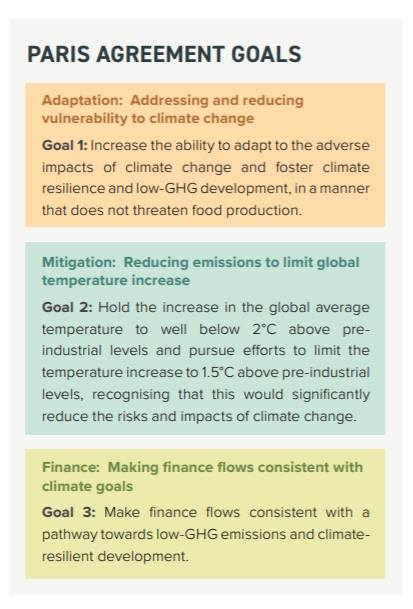
Exactly five years ago, the landmark Paris Agreement brought new hope for strengthened global climate action. Critically, nations from around the world were able to reach a consensus and set a temperature target: to limit the global temperature increase to well below 2°C, pursuing efforts to limit it to 1.5°C. Goals were also set for adaptation and finance.
However, the first round of Nationally Determined Contributions (NDCs) to achieving the Paris Agreement goals fell far short.
Together, the 2015 NDCs were projected to result in a temperature rise close to 3°C or higher, given that implementation of NDCs has been uneven at best.
In the years since, the very best climate science has confirmed that the impacts, risks, and costs of 1.5°C will be significant – yet likely manageable, but higher levels of warming will cross into catastrophic magnitudes of change. To avoid this, climate ambition and action must be ratcheted up now. Most importantly, the biggest emitters and economies need to do what is necessary now to ensure that the global goals of the Paris Agreement are achievable, ensuring a better future is attainable for all.
The G20 is responsible for more than two thirds of global GHG emissions and 85% of global GDP. These 20 countries hold determinative influence internationally, regionally, and in critical international forums and bodies. Achieving the Paris Agreement goals will not be possible without G20 leadership.
The Climate Transparency Report shows that G20 climate ambition has been lacking since Paris. While progress has been made, in some areas and in some countries, it has been slow and does not set the basis for fast enough, or deep enough, emissions reductions or other climate action.
However, ahead of the UN Climate Action Summit this weekend, things are looking up. It has been reported that 76 heads of state will present new and improved climate commitments. This follows several net-zero emissions by mid-century announcements, which have demonstrated the domino effect of climate ambition among leading economies. While the UK, France, Germany, the EU, Canada, China, South Africa, South Korea and Japan have already made such announcements, more should be expected.

In addition, we can expect information on enhanced NDCs to be shared (reportedly 50), which were due to be updated by all parties to the Paris Agreement in 2020. Already, the EU has confirmed a new emissions reduction target of 55% by 2030 ahead of the event.

Though there is much excitement and anticipation, it is important to compare commitments against fair-share contributions to climate efforts and to ensure that long-term targets are matched by short term actions. The Climate Transparency Report provides clear benchmarks on what is necessary to achieve the 1.5°C target across key sectors, identifies opportunities for action, and how finance flows can be brought in line with suitably ambitious climate adaptation and mitigation.
It is also crucial that NDC updates are in line with the transparency requirements of the Paris Agreement, to allow for accurate accounting and accountability. The NDC Transparency Check of Climate Transparency provides recommendations on what information countries should provide in their 2020 NDC Update to ensure its clarity, transparency, and understanding in order to conform with the Agreement (annex of 4/CMA.1 under Article 4.8.).
Of course, the Climate Ambition Summit will also take place against the backdrop of COVID-19. While the pandemic has led to approximately 7% reduction in CO2 emissions in 2020, the concentration of CO2 in the atmosphere again breached previous records in 2020 and many observers expect emissions to rebound. A green recovery from the COVID-19 pandemic is necessary to ensure that the goals of the Paris Agreement is achieved and that our future is more resilient, secure, and sustainable.







